A lead magnet is a powerful tool for attracting and converting potential customers into leads for your business.
Whether you’re a small business owner or a marketer for a large company, creating an effective lead magnet is essential for growing your customer base and increasing revenue.
- What Is a Lead Magnet?
- Types of Lead Magnets
- 1. eBooks
- 2. Webinars
- 3. Free Trial
- 4. Checklists and Templates
- 5. Whitepaper
- How to Create a Lead Magnet that Works
- Step 1: Understand Your Target Audience
- Step 2: Choose the Right Type of Lead Magnet
- Step 3: Include a Clear Call-to-Action
- Step 4: Promote Your Lead Magnet
- Step 5: Deliver Your Lead Magnet
- What Makes a Good Lead Magnet
- Best Lead Magnet Examples
- 1. The Sales Evangelist
- 2. WholesomeYum
- 3. Dewetron
- 4. Moz
- 5. Tidio
- How to Distribute Your Lead Magnet
- Why Every Business Needs a Lead Magnet
In this article, we’ll explore the different types of lead magnets, how to create one that resonates with your target audience, and the best lead magnet examples.
From crafting the perfect opt-in offer to leveraging social media and other digital platforms, this guide will provide you with everything you need to create a lead magnet that drives results.
What Is a Lead Magnet?
A lead magnet is a valuable piece of content or offer that is designed to attract and capture the contact information of potential customers. The main purpose of a lead magnet is to convert website visitors into leads by offering them something of value in exchange for their contact information. This can be anything from an ebook, webinar, report, or even a free product or service trial.
Businesses can use lead magnets to build a list of potential customers who have shown interest in their brand and are more likely to convert into paying customers in the future.
Lead magnets are an essential part of any effective inbound marketing strategy. They help to build trust and establish relationships with potential customers by providing them with valuable information. What’s more, they allow you to segment your audience based on their interests, allowing for more targeted marketing efforts in the future.
You can even use lead magnets to generate leads for various purposes, such as email marketing campaigns, webinars, and even sales funnels.
We recommend you create and follow a lead magnet template to save your time.
Types of Lead Magnets
There are many different lead magnet types to choose from, each with its strengths and best practices.
Let’s take a look at some of the most popular lead magnet ideas, types, and how you can use them to generate leads for your business:
1. eBooks
E-books are a great way to provide in-depth information on a specific topic that is relevant to your target audience. They can be used to educate or inform your potential customers, positioning you as a thought leader in your industry.
To create an effective ebook lead magnet, it’s important to keep the design visually appealing, make it easy to read, and include a clear call-to-action at the end, such as signing up for a newsletter or scheduling a consultation.
E-books can be delivered in various formats, such as PDF, Mobi, or ePub.
2. Webinars
Webinars are a great way to provide valuable information and demonstrate your expertise in real time. You can use webinars to showcase new products or services, offer training or education, or even host a Q&A session.
You can also use webinars to showcase your product/service and provide a sneak peek of what they can expect if they decide to become customers. It’s also a good idea to consider the webinar format, whether it’s live or pre-recorded, and the software you’ll use to host it.
Overall, webinars can be an excellent lead magnet if executed well, as they provide a valuable experience to your audience.
3. Free Trial
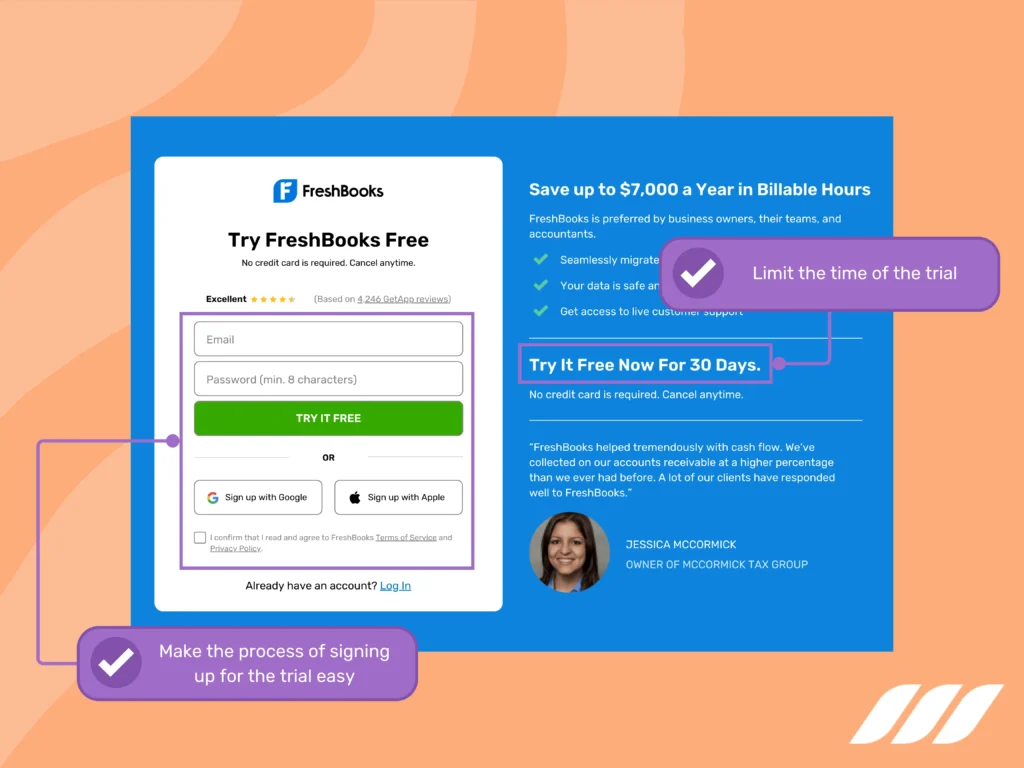
Free trials are an effective lead magnet option for businesses that offer products or services that can be tested before buying. It allows potential customers to try out your product or service before making a purchase, increasing conversion chances.
To create an effective free trial lead magnet, it’s important to limit the time of the trial and make the process of signing up for the trial easy. You can also include educational resources such as tutorials or guides to help them make the most of the trial period.
To create an effective free trial, be sure to limit the time and offer a clear call to action to upgrade to a paid version.
4. Checklists and Templates
Checklists and templates guide your audience to a specific task or process. They can be used in various industries and provide value by making complex processes more manageable.
Checklists and templates are a great way to show your audience that you understand their pain points and have a solution to help them. You may also want to use templates and checklists to educate and inform your potential customers about a particular subject and provide them with valuable insights.
To create an effective checklist or template lead magnet, it’s important to make it visually appealing, easy to follow, and include a clear call-to-action at the end to capture their contact information.
5. Whitepaper
Whitepapers are a popular and effective lead magnet option for many businesses, particularly in the B2B space. They are in-depth reports or guides that provide valuable information and insights on a specific topic or industry.
White Papers are often used to position a business as a thought leader in its industry and provide valuable insights to potential customers. You can use whitepapers to educate and inform your potential customers about a particular subject and provide them with valuable insights. It is also good to include case studies, statistics, or expert opinions to support your findings in your whitepaper.
While creating a B2B lead magnet, consider the length of the whitepaper. How long should a lead magnet be? The longer, the better, as long as it covers the main points of the topic you want to deliver.
How to Create a Lead Magnet that Works
To create perfect lead magnet that works, you need to understand your target audience, choose the right type of lead magnet, and adopt certain promotional and delivery best practices.
Read on for the steps to create a lead magnet that works:
Step 1: Understand Your Target Audience
To start creating a lead magnet, you’ll need to understand your target audience. You need to know who they are, what their pain points are, and what kind of content or offers will be most valuable to them. This information will help you choose the right type of lead magnet and tailor it to their specific needs.
Step 2: Choose the Right Type of Lead Magnet
As stated above, there are many different types of lead magnets to choose from, including ebooks, webinars, free trials, checklists, and templates. Each type has its strengths and best practices, so choosing the one that will be most effective for your target audience is important. For example, if you’re a B2B company, a whitepaper may be a more effective option than a free trial.
In this step, you’ll need to generate as many lead magnet ideas as you can and shortlist the ones that best fit your business.
Step 3: Include a Clear Call-to-Action
Once you’ve chosen the right type of lead magnet, it’s important to include a clear call-to-action (CTA) to capture the contact information of your leads. Make sure your CTA is prominently displayed and easy to find. Plus, it should clearly mention what the potential customer will receive in exchange for their contact information.
Step 4: Promote Your Lead Magnet
Once your lead magnet is created, it’s time to promote it. There are many different ways to promote your lead magnet, including social media, email marketing, and paid advertising. Pick the channels that are most likely to reach your target audience.
Step 5: Deliver Your Lead Magnet
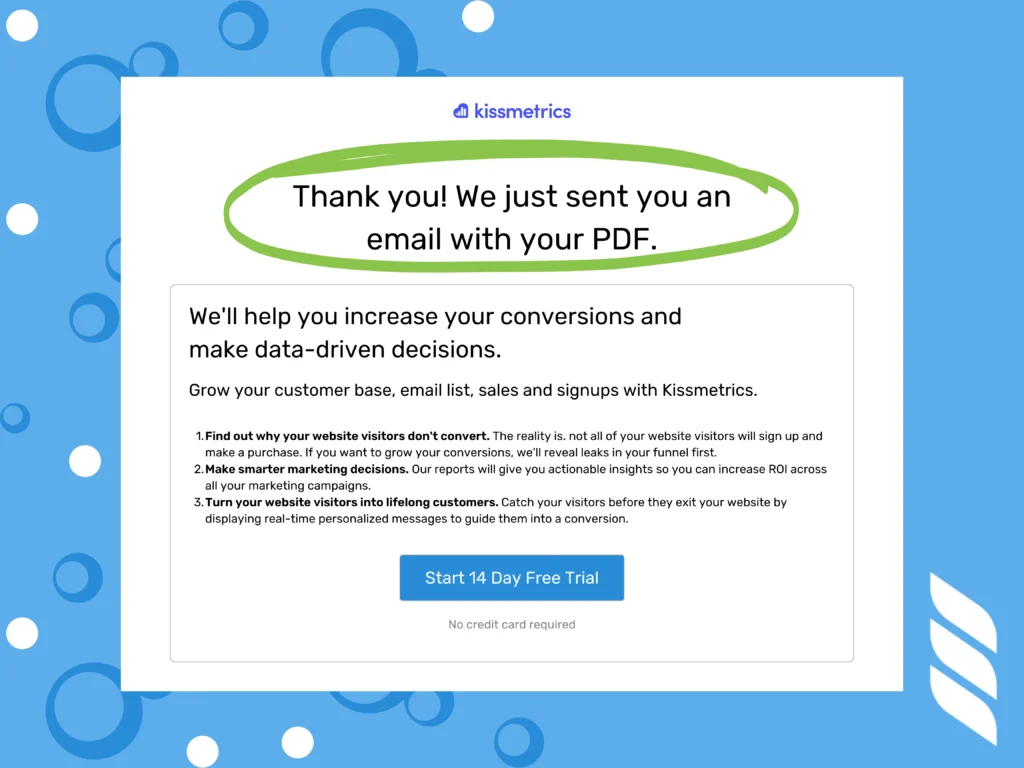
Finally, it’s time to deliver your lead magnet professionally. Make sure that the lead magnet is delivered in the format you promised and is of high quality. You can also include a thank-you message or an incentive to encourage them to take the next step in the lead magnet funnel.
By following these steps, you can attract and convert more potential customers and grow your business with the help of lead magnets.
What Makes a Good Lead Magnet
To create a lead magnet that effectively generates leads, it’s important to understand what makes a good lead magnet.
First and foremost, a good lead magnet must provide value to the potential customer. It should be relevant to your target audience’s interests and address a specific pain point or problem that they have. You can provide educational content, such as an ebook or whitepaper or a free product or service trial.
Another important aspect of the perfect lead magnet is that it should be easy to consume.
Your lead magnet must be visually appealing and easy to read. Plus, it should be delivered in a format that is easy to access, such as a PDF or webinar.
A good lead magnet should have a clear call-to-action (CTA) aimed at collecting the contact details of your leads. The CTA should be prominently displayed and easy to find. It should clearly explain what the potential customer will receive in exchange for their contact information.
Additionally, a good lead magnet should be promoted effectively. It should be promoted through the right channels, such as social media, email marketing, or paid advertising.
Lastly, a good lead magnet should be delivered promptly and professionally.
Best Lead Magnet Examples
One of the best ways to learn how to use lead magnets is to take inspiration from a lead magnet example. Below, you can find 5 best lead magnets that have been used effectively by businesses:
1. The Sales Evangelist
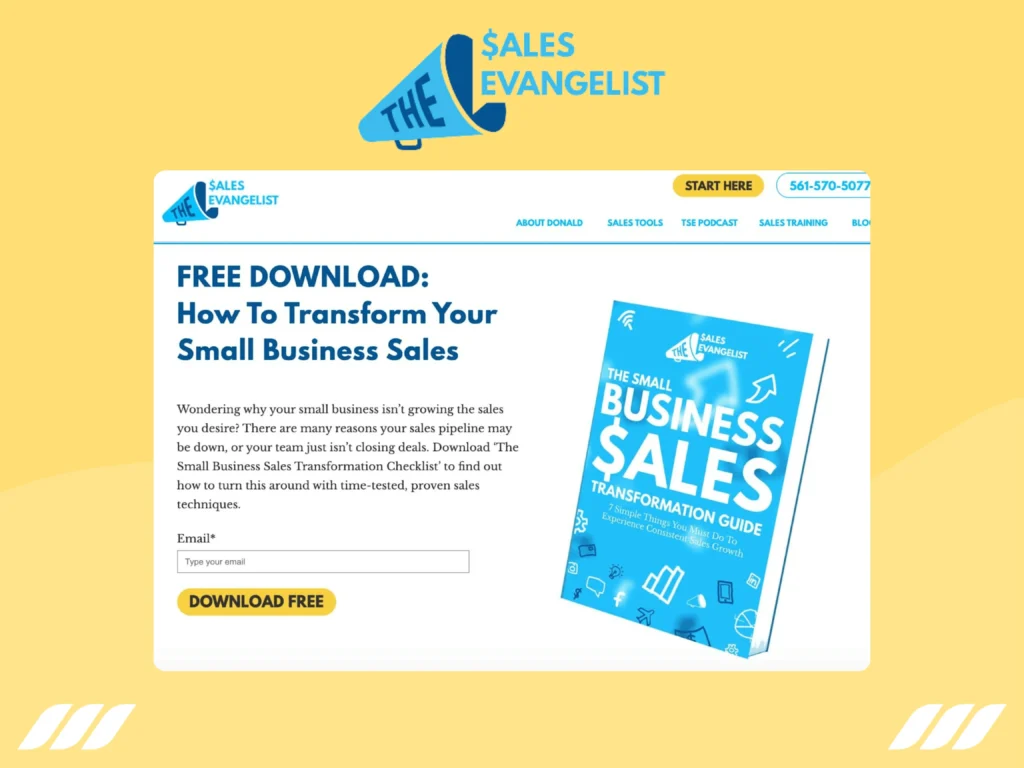
The Sales Evangelist also uses an ebook as a lead magnet.
It offers a free ebook titled “How to Transform Your Small Business Sales” to potential customers who sign up for their mailing list.
The ebook provides valuable information and tips on how small business owners can improve their sales strategies and increase revenue.
By providing this valuable information, The Sales Evangelist can attract potential customers and generate leads for their sales training and consulting services.
2. WholesomeYum
WholesomeYum is a food blog that focuses on low-carb and ketogenic recipes.
They use a cheat sheet for a Keto diet as a lead magnet to attract potential customers who are interested in following the diet.
The cheat sheet provides a list of allowed foods, foods to avoid, and tips for meal planning and grocery shopping, making it an excellent lead magnet example.
By providing this valuable resource, WholesomeYum is able to attract potential customers who are interested in the ketogenic diet and generate leads for their food blog and cookbooks.
3. Dewetron
Dewetron is a company that specializes in measurement and control systems.
They use a whitepaper as a lead magnet to attract potential customers who are interested in learning more about their products and services.
The whitepaper provides in-depth information on a specific topic related to measurement and control systems, positioning Dewetron as a thought leader in the industry.
By offering this valuable information, Dewetron is able to attract potential customers and generate leads for their products and services.
4. Moz
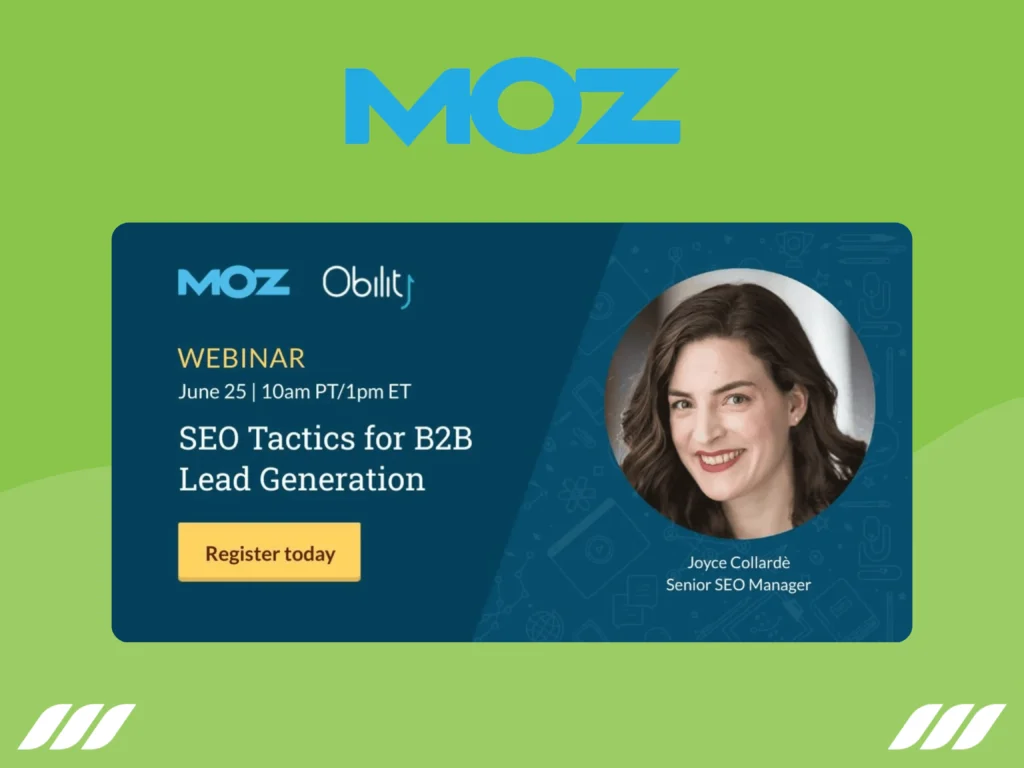
Moz is a digital marketing software company that uses webinars as a lead magnet to attract potential customers who are interested in learning more about search engine optimization (SEO) and lead generation.
The company offers a free webinar titled “SEO Tactics for B2B Lead Generation” that teaches attendees the best practices for improving their website’s search engine rankings and generating leads for their business.
Using this lead magnet, Moz is able to attract potential customers and generate leads for their digital marketing software and services.
Moz promotes the webinar through its website, email marketing, and social media channels, making it easy for potential customers to sign up and attend.
5. Tidio
Tidio offers a live chat software for businesses. They use a free trial as a lead magnet to attract potential customers who are interested in trying out their software.
The free trial allows potential customers to test the software for a limited period of time, giving them a sense of what to expect if they decide to purchase the service.
The trial also includes an educational guide on how to set up and use the software.
By providing this valuable resource and the opportunity to test the service, Tidio Live Chat is able to attract potential customers and generate leads for their live chat software.
How to Distribute Your Lead Magnet
Creating a lead magnet is an important step in generating leads for your business, but it’s not the only step. Once you have your lead magnet ready, you need to distribute it to your target audience in order to attract and convert potential customers.
But how do you distribute your lead magnet effectively?
Here are some tips on how to distribute your lead magnet to maximize its effectiveness:
- Use a landing page: A high converting landing page is a standalone web page that is designed to convert visitors into leads. It should include a clear and compelling headline, a brief explanation of the lead magnet, and a form visitors can fill out to receive the lead magnet.
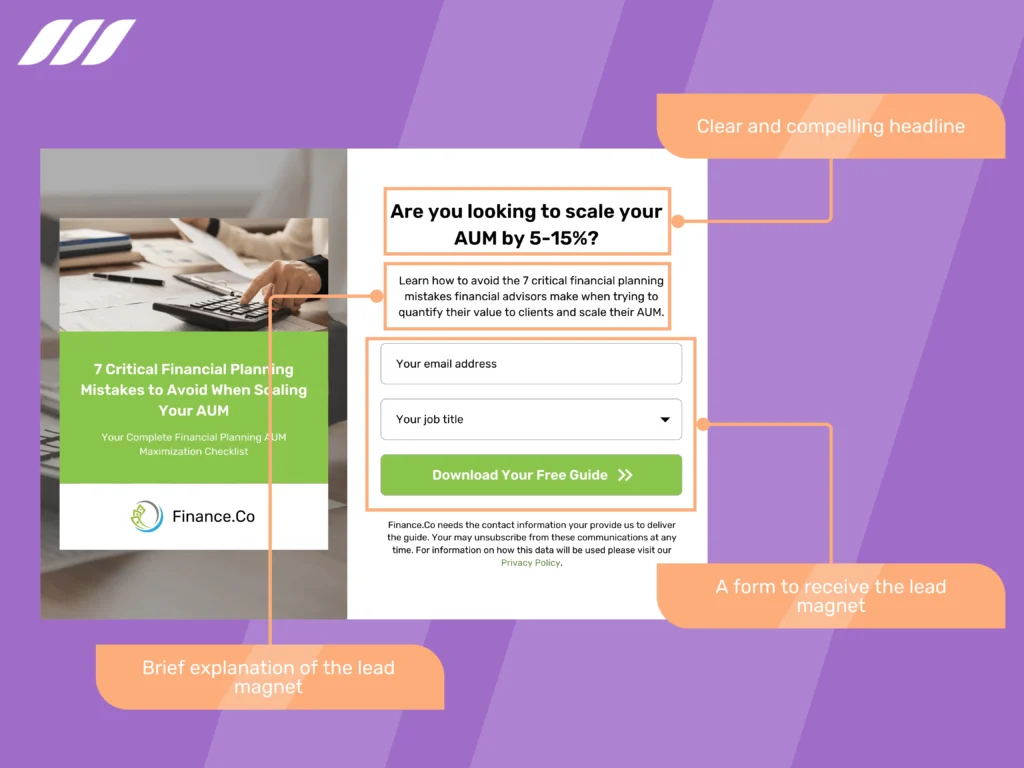
- Promote on social media: Social media marketing is a powerful tool for promoting your lead magnet. Share a link to your landing page on your social media profiles and in relevant groups and communities. Be sure to use relevant hashtags and keywords to make it easier for your target audience to find your lead magnet.
- Email marketing: Email marketing is yet another effective way to promote your lead magnet. You can send an email to your current email list and let them know about your new lead magnet and the benefits of using it.
- Use influencer marketing: Influencer marketing is a great way to promote your lead magnet to a wider audience. Consider reaching out to influencers in your industry and ask them to promote your lead magnet to their followers.
- Paid advertising: Paid advertising, such as Google Adwords, LinkedIn Ads or Facebook Ads, can be a powerful way to promote your lead magnet. Using ads, you can target specific demographics, interests and behaviors to reach your target audience.
- Include it in your blog post: If you have a blog, you can include a link to your lead magnet in your blog posts. This can be a great way to attract visitors who are already interested in your content and encourage them to download your lead magnet.
- Use referral marketing: Referral marketing involves offering incentives to your current customers to refer their friends and family to your lead magnet.
Why Every Business Needs a Lead Magnet
Every business needs a lead magnet because it is an essential component of a successful inbound marketing strategy.
First, lead magnets provide a way for businesses to attract potential customers and build an email list for marketing efforts.
By offering a valuable piece of content or a free trial, businesses can entice potential customers to provide their contact information in exchange for access to the lead magnet. This allows businesses to build an email list of interested and engaged potential customers.
Second, lead magnets can help to qualify leads.
By offering different lead magnets for different stages of the buying process, you can use lead magnets to identify which potential customers are most likely to convert into paying customers. This helps businesses focus their efforts on the most promising leads and increase the efficiency of their sales process.
Finally, lead magnets can help to establish trust and credibility with potential customers.
Lead magnet is a great way to demonstrate your expertise and establish yourself as a trusted authority in your industry. This can help to build relationships with potential customers and increase the likelihood of converting them into paying customers.
Overall, lead magnets are an essential component of a successful inbound marketing strategy, and every business should have one in place to attract, qualify, and convert potential customers into paying customers.
Conclusion
Lead magnets allow you to capture the contact information of your leads in exchange for a valuable offer. They also help you to qualify leads, establish trust and credibility, and ultimately convert potential customers into paying customers.
The key to creating a successful lead magnet is to understand the needs and pain points of your target audience, and to offer a solution that addresses those needs.
By following the steps, tips, and examples outlined in this article, you can create effective lead magnets that will help to drive conversions and grow your customer base.

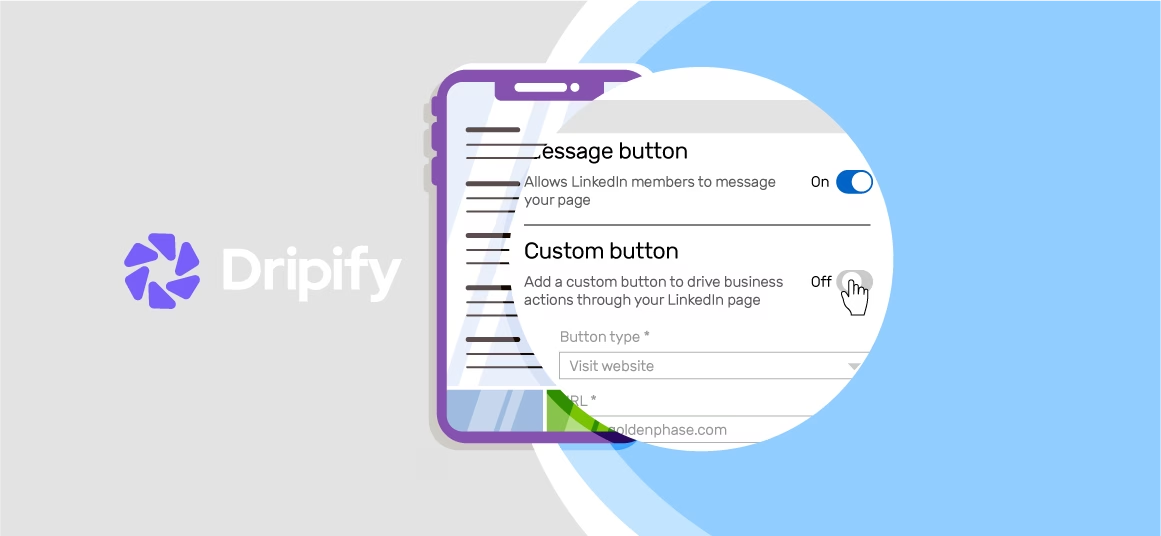
![Email Outreach Tracking [Tips, Tricks and Tools]](https://dripify.io/wp-content/uploads/2025/02/11-7-png.avif)
![Create a Prospecting Plan [+8 Prospecting Methods]](https://dripify.io/wp-content/uploads/2025/02/11-png.avif)